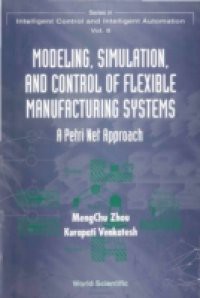One critical barrier leading to successful implementation of flexible manufacturing and related automated systems is the ever-increasing complexity of their modeling, analysis, simulation, and control. Research and development over the last three decades has provided new theory and graphical tools based on Petri nets and related concepts for the design of such systems. The purpose of this book is to introduce a set of Petri-net-based tools and methods to address a variety of problems associated with the design and implementation of flexible manufacturing systems (FMSs), with several implementation examples.There are three ways this book will directly benefit readers. First, the book will allow engineers and managers who are responsible for the design and implementation of modern manufacturing systems to evaluate Petri nets for applications in their work. Second, it will provide sufficient breadth and depth to allow development of Petri-net-based industrial applications. Third, it will allow the basic Petri net material to be taught to industrial practitioners, students, and academic researchers much more efficiently. This will foster further research and applications of Petri nets in aiding the successful implementation of advanced manufacturing systems.Contents:Flexible Manufacturing Systems: An OverviewPetri Nets as Integrated Tool and Methodology in FMS DesignFundamentals of Petri NetsModeling FMS with Petri NetsFMS Performance AnalysisPetri Net Simulation and ToolsPerformance Evaluation of Push and Pull Paradigms in Flexible AutomationAugmented-Timed Petri Nets for Modeling Breakdown HandlingReal-Time Petri Nets for Discrete Event ControlComparison of Real-Time Petri Nets and Ladder Logic DiagramsAn Object-Oriented Design Methodology for Development of FMS Control SoftwareScheduling Using Petri NetsPetri Nets and Future ResearchReadership: Engineers and researchers in systems & knowledge engineering, electrical & electronic engineering, mechanical engineering, manufacturing systems, robotics, operations research and CAD/CAM.Key Features:Leveraged from the EU Future and Emerging Technologies programme on pervasive adaptationThis publication takes its perspective from the classic science fiction/social commentary novel, This Perfect Day, by Ira LevinAll contributors are experts in user-centred systems and technology
















